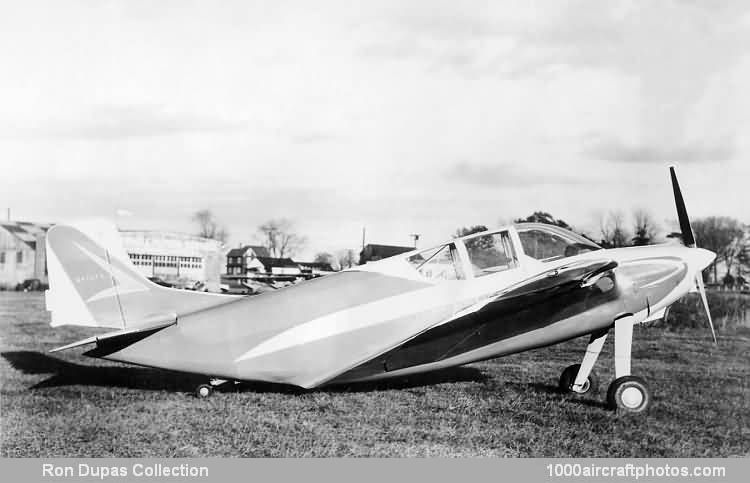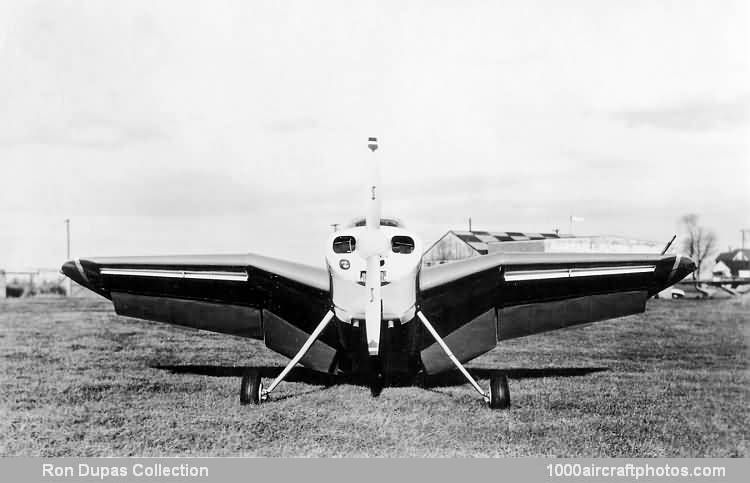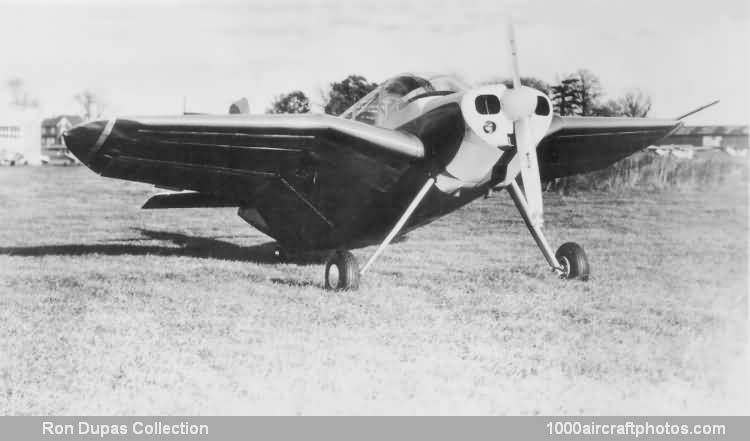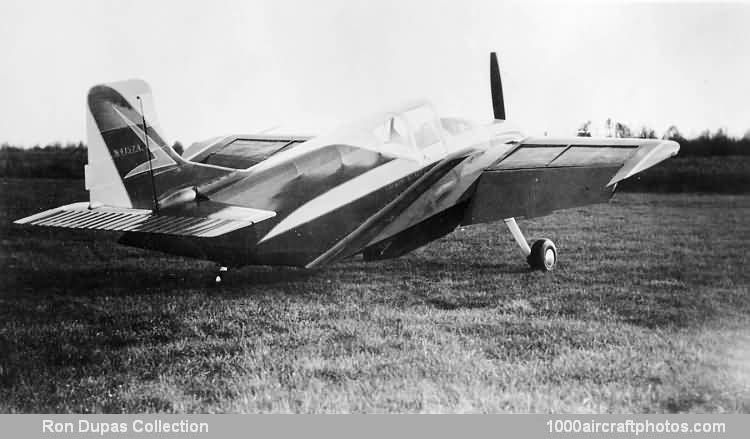02/28/2023. Remarks by
Walter van Tilborg: "The 110 Paraplane Commuter research aircraft, also referred to as the PL-8B, was designed by Edward H. Lanier and it was built by the Lanier Aircraft Corporation at Marlton, New Jersey, USA. The aircraft was purely built for research and to further test the so-called semi-STOL vacuplane wing as tested on the earlier
120 Paraplane and Paraplane II, which had flown in 1949 respectively in 1953. It mainly differed from these earlier aircraft in having a redesigned fuselage and more cockpit glass area, and was powered by an 150 hp Lycoming O-320 engine.
Registered N4157A on November 3, 1958, the aircraft first flew before the end of the year. The aircraft had theoretically accommodation for two persons, but was flown as single-seater and was later modified with wing slots known as Vacu-Jets, creating some kind of natural boundary layer control. It also served as proof of concept vehicle for a projected four-seat Model 443 with an 180 hp Lycoming O-360 engine, but this aircraft was not built. The registration was cancelled on February 5, 1969."
The following information and the four views were printed together on an 8x10 in (20x25 cm) glossy photo.
Specifications and Performance of Prototype (Patented)
AIRPLANE
Manufacturer: Lanier Aircraft Corporation
Type: 110 Paraplane Commuter, single place (STOL)
Serial No. PL-8B
Span: 20 ft 7 in (6.27 m)
Length: 21 ft (6.40 m)
Fixed type landing gear (Special design of low drag and maintenance)
Gross weight: (Normal) 1,280 lb (581 kg)
Gross weight: (Ferry) 1,400 lb (635 kg)
Useful load: 500 lb (227 kg)
Fuel: (Normal) 24 gal (91 l)
Fuel: (Ferry) Built in, 20 gal (76 l). All tanks located in wings
Oil: 8 qt (7.57 l)
Engine: 150 hp Lycoming O-320
Wing area: 111 sq.ft (10.31 sq.m)
Propeller: McCauley, metal fixed pitch
Airplane equipped with flaps, flaperons and Vacu-jet (Natural BLC)
PERFORMANCE
Top speed: 165 mph (266 kmh)
Cruise speed: 151 mph (243 kmh)
Range: 625 mls (1,006) plus 45 min. fuel reserve
Fuel economy: 17 mls/gal (6 km/l)
Take off speed: Under 30 mph (48 kmh)
Landing speed: Under 30 mph (48 kmh)
Take off distance at normal gross weight: 20 yd (18 m)
Landing distance at normal gross weight: 20 yd (18 m)
Rate of climb: 1,500 ft (457 m)/min plus
Take off over 50 ft. obstacle: 55 yd (50 m)
Slow flight with good control: 25 mph (40 kmh)
Slow flight with power without loss of altitude: 15 mph (24 kmh)
Ceiling: 23,000 ft (7,010 m) (compensated carburetor)
CHARACTERISTICS
STOL (short take off, landing.)
Anti-stall, anti-lateral slip-off, anti-spin, anti-skid during turns.
INHERENT SAFETY
Safe low and slow flight around obstacles.
"Bird like" maneuverability at slow speed.
EQUIPMENT
Tires: 6:00 - 6 Nylon
Brakes: Hydraulic single disc.
Tail wheel: Oleo shock absorber. (Steerable, full swivel.)
Engine muffler: New patented type. High power and low noise level.
Radio: Transmitter and receiver. (Shielded engine plygs and harness.)
Lights: Landing and running lights.
Complete instrument panel, including:
helicopter airspeed indicator
magnetic compass
gyro artificial horizon
directional gyro compass
turn & bank indicator (vacuum source is engine pump),
altimeter
inclinometer
rate of climb
outside air temperature
electric fueld gauges
engine switch and key lock
cyclinder temp. gauge
switches
primer
cowl flap control
parking brake
mixture control.



